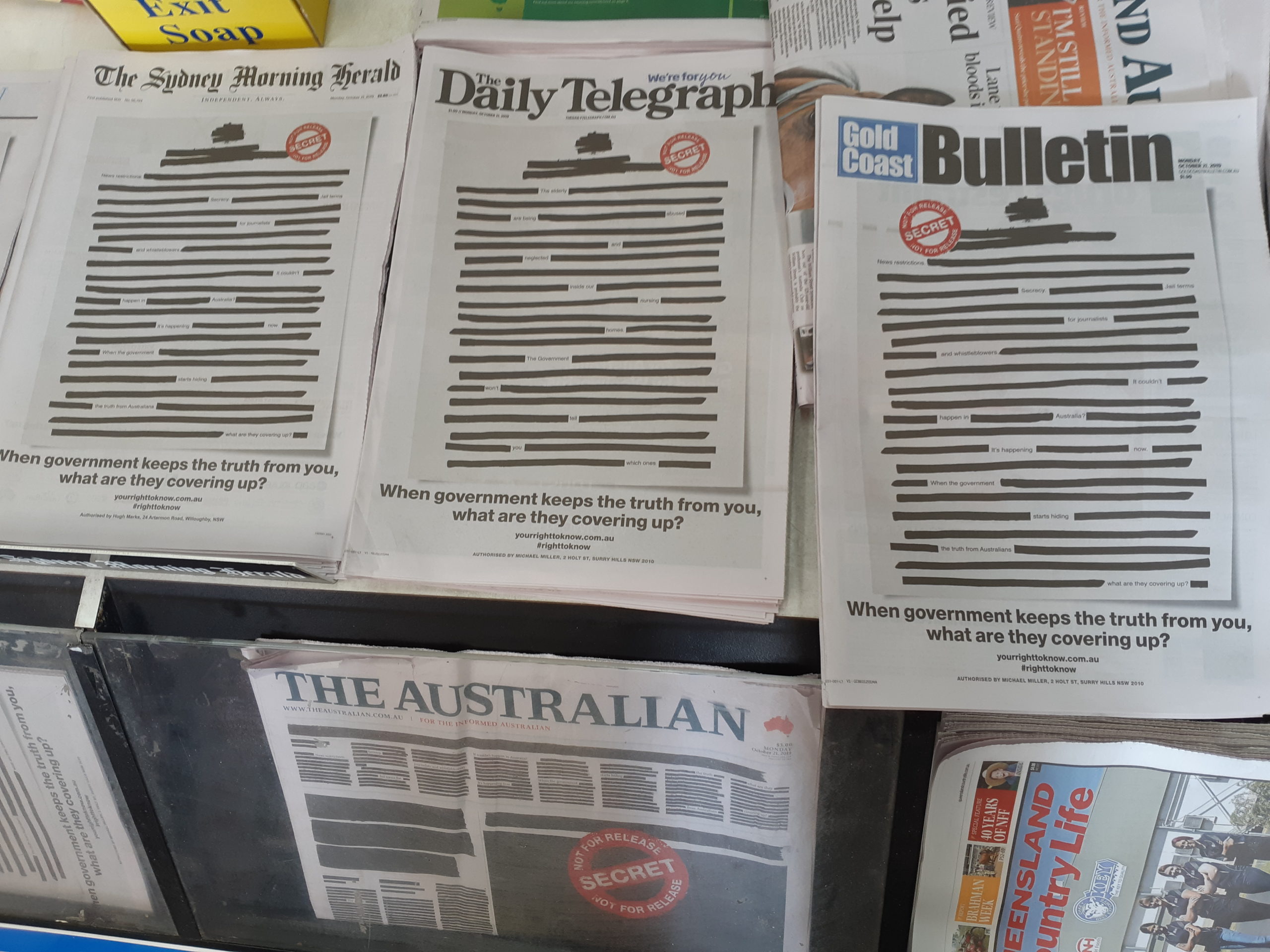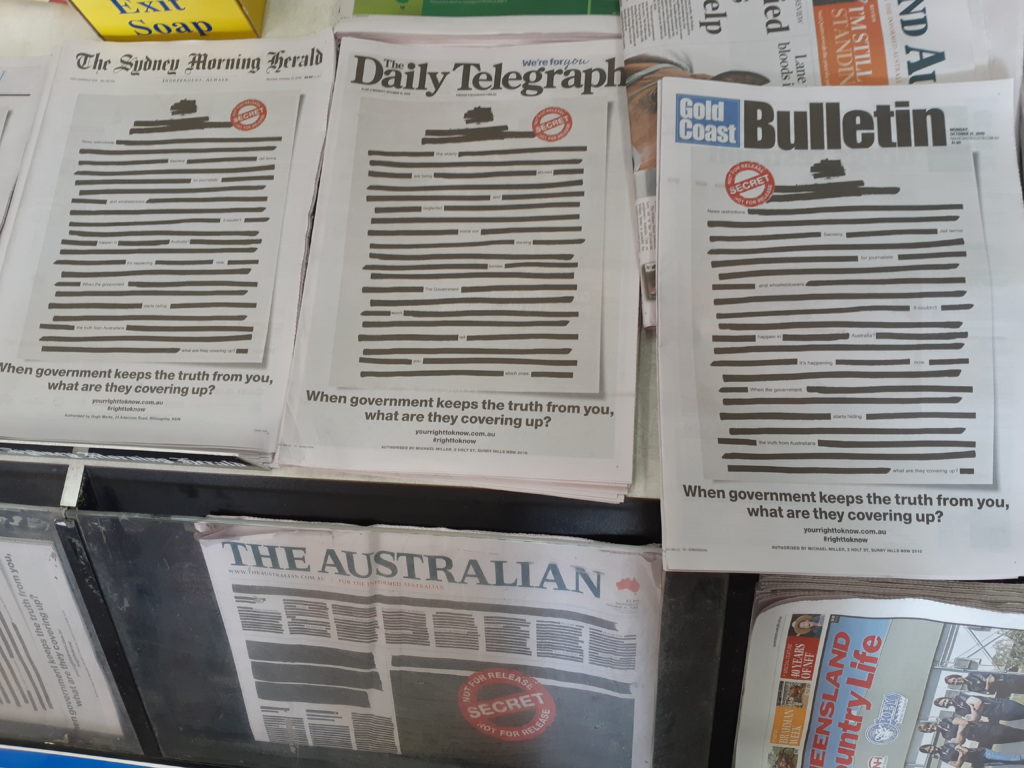

Concerns about governments and councils ignoring the community’s Right to Know lead this week’s letters to Redlands2030. Other letters are about professional standards and Capalaba’s development.
The Right to Know
The Right to Know campaign is long overdue, I just hope its not too late. I agree whole hardly that “when government keeps the truth from you, what are they covering up?
But there needs to be a broader call on the information to be released. The clever avoidance of full and frank release seems to be a weakness and it is rampant. What the community needs is assurances, like in court, that what is being given “is the truth the whole truth and nothing but the truth”.
The call to release details of secret deal behind the Toondah PDA looks likely to be in the courts for years. In the meantime, the community is left not knowing the implications of the deal between the developers, the State Government and Redland City Council. It is surely untenable that this deal stays secret past the next election!
I had was always believed that the greatest threat to our democracy was from outside Australia. But of late, and watching the “Right to Know campaign” unfold, I feel as though I was greatly mistaken.
Advance Australia Fair. Not likely.
JT
Cleveland
Capalaba community gets no respect
Visiting Capalaba Park shops recently, a business woman complained to me about how Redland City Council now refers to itself as Redlands Coast. Her question and mine is Why?
When we have long referred to ourselves, simply as, ‘the Redlands’.
She went further stating her opinion that our politicians have done nothing for Capalaba…zero, zilch!
In my view she is right. There are few nice restaurants, too much traffic and from what I see, the place is saturated with fast food outlets. If that is a result of Council planning the result will have doctors hit with waves of obese patients and unprepared to tackle Australia’s multi-billion dollar obesity crisis.
Then, there are the parks in Capalaba. These are neglected!
The local Councillor (Division 9) seems out of reach of most of the division’s constituents, as is the adjoining Division 7 Councillor.
In my view they show no respect for Capalaba or its community.
ACC
The Redlands
Professionals have obligations to the community
We live in a world in which we rely on professionals in many contexts for a safe, healthy world. Unfortunately , we are also suffering a crisis of trust which frequently involves professions and those who appear as “professionals” within them.
Most frequently, the trust issues arise from undisclosed conflicts of interest. The very existence of an undisclosed conflict involving a professional begins to erode confidence in the entire profession.
Clearly there are risks to such professionals which may have repercussions for the individual, or firm. They range from reputation risks which can destroy a career or a company, to criminal consequences, when clients or third parties are harmed as a result of unprofessional conduct.
To focus this down to a set of local circumstances, I believe we have a case which may or may not be unprofessional conduct, but where some of the stakeholders have no voice, and thus where risky behavior may go undetected.
When an environmental report is required as one of a series of professional input to a development proposal of one kind or another, it is interesting to contemplate the range of stakeholders. Here’s a list for consideration of DEVELOPMENT STAKEHOLDERS:
- The client
- The developer
- Affected neighbours – ie the Locals
- The local authority – the community – the public
- Affected native flora and fauna…. ie The environment
On the surface, the stakes are fairly broad for most development proposals, but seldom recognized, understood or regarded. A true professional who expects the trust and respect of the public would, one would expect, pay some regard to the entire range of stakeholders when writing a report for a client, irrespective of who is paying for the engagement.
I have recently read two reports written by the same professional firm. In both cases, the report states that no or minimal occurrence of a particular species was observed, although some historical signs of habitation could be seen. In each case, there was clearly a local population of this valued species known by neighbors and others, but the consultant recorded that none had been observed.
So is it good enough that a narrow view of the environmental status of the site, one that suits the client’s requirements, is used as a trusted part of the evidence used in making a decision about proceeding with a development? Who is there to hold this “professional” to account? Is it a lie when the entire truth is withheld?
One cannot avoid the suspicion that the submission of such reports is all too common, not recording the whole truth, but a “sanitized” version of reality that suits the client.
In the end, we all lose.
DC
Thornlands
More letters
If you have something to say send an email to: theeditor@redlands2030.net
Here are links to some letters published recently by Redlands2030:
- Toondah questions raised in letters
- Badness, gladness and madness in Redlands
- Adani and UNESCO inspire letters on Toondah
Redlands2030 – 29 October 2019
Please note: Offensive or off-topic comments will be deleted. If offended by any published comment please email thereporter@redlands2030.net
3 Comments
Perhaps we need to rethink our concept of the environment? We are not separate from our environment – social or physical. Everything that makes up our bodies comes from our environment. The water, the nutrients from the food that we eat all come from the planet on which we live, Earth. Given we depend completely on the Earth for our survival should we not reconsider our relationship to it? It is a compelling reason for why we should protect the Earth and reap the benefits of the ecosystem services that keep us alive. There is no stronger argument for why we should use our environment in an ecologically sustainable manner. How does developing Toondah Harbour destroying part of the RAMSAR site as proposed by the Walker Corporation benefit the residents of Redlands? How is it ecologically sustainable? Redlands needs a vision for the future. A sustainable future, not the short-term fix-its that seem to have dominated most planning in Redlands. What about a vision for Redlands that provides long-term jobs: jobs for generation after generation. Redlands has Moreton Bay at its doorstep. Moreton Bay attracts tourists, so why does Redlands not develop a sustainable eco-tourism industry? Retain the natural beauty of the place rather than destroying it and use the natural beauty to give tourists experiences that they cannot get at the Gold or Sunshine Coasts? Wouldn’t that be a boost for the economy in Redlands? Wouldn’t that be innovative? Is Redlands ready for it?
As a biologist I can confirm that our koala population in S E Qld has been depleted by an estimated 80% since 1990 and yet our local councils and both state governments (Labor and LNP) carry on oblivious. Let’s hope that our new Federal Environment Minister, Sussan Ley, is a lot better than Josh Frydenberg was when he occupied this portfolio. We need government members who will work in the interests of our environment and our threatened species, not people who will roll over when a wealthy developer makes a large donation in order to further a commercial proposal.
It’s so heart breaking how the once beautiful Redlands has been destroyed.